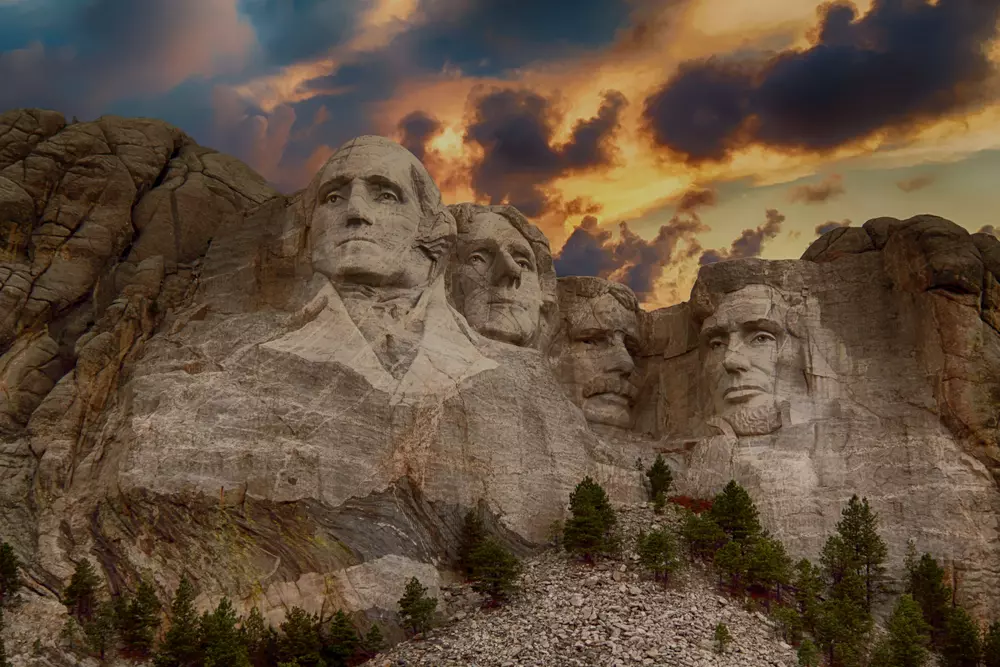He didn’t just sing. He moved like no one before him, transforming the very idea of stage presence, style, and freedom. Elvis Presley — a name that marked the beginning of rock ’n’ roll as a phenomenon. Not just an academic term or a club trend, but a true cultural revolution that echoed through millions of speakers, radios, and hearts. He was called the King, imitated, adored, and... feared. Even decades later, Presley is more than a performer — he is a symbol.
He became the voice of a generation that dared to be free for the first time. Elvis emerged in an era when America was trying to recover from the aftermath of World War II, searching for a new sound, new meanings, and a new identity. And it found it. His songs played in teenagers’ cars, spun at parties, and were secretly broadcast on radios in states where blues and rock were considered “dangerous music.”
With Elvis, a new America began — bold, rhythmic, and confident. He was not just a singer — he became a mirror of his time. And he remains so to this day.
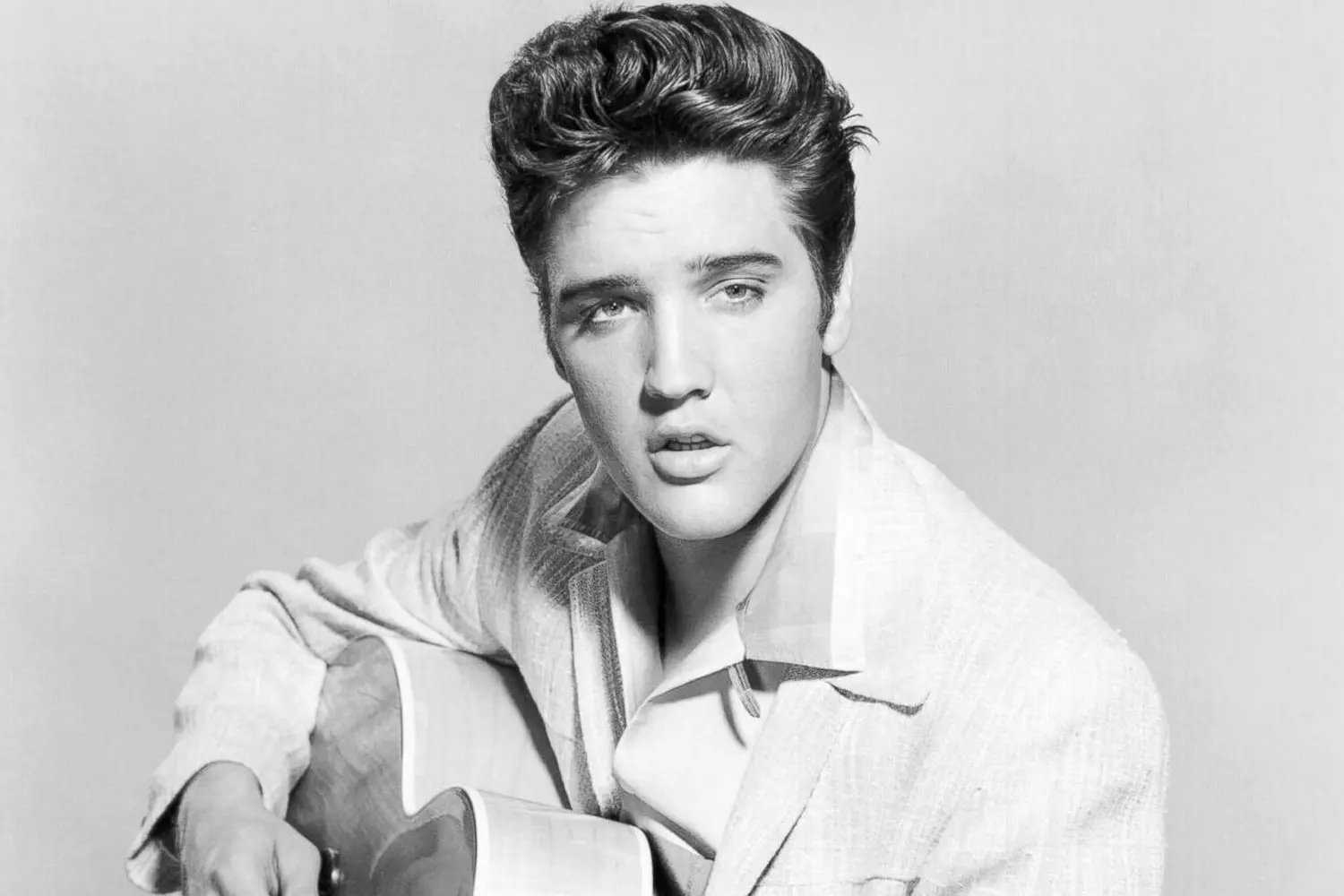
«He was my friend, my brother on stage. Elvis opened the doors that we all walked through afterward.» — Johnny Cash
Childhood and the Beginning of the Journey: A Lone Voice from the South
Elvis Aaron Presley was born on January 8, 1935, in a tiny house in Tupelo, Mississippi. At first glance — just an ordinary Southern small town. Dusty streets, wooden shacks, corn-scented air, and sweaty cotton plantations. It was the time of the Great Depression, when poverty wasn’t a tragedy — it was the norm. But even amid this everyday hardship, Elvis’s birth was marked by tragedy, as if fate had sealed his path: his twin brother, Jesse Garon, died during childbirth. Elvis survived. Alone. And his mother said his whole life was somehow lived "for two."
This loss forever made him especially sensitive to pain. He grew up feeling an invisible twin — as if he was talking to someone in his sleep, as if a second voice sounded inside him, longing, quiet, almost mystical. Later, he often said he felt his life was lived on behalf of the one who didn’t survive.
Years of hardship and a mother as the universe
The Presley family lived a meager existence. His father, Vernon Presley, was a kind but unstable man — sometimes working, sometimes arrested for check forgery, always desperately searching for any kind of income. They moved constantly like tumbleweeds, leaving behind debts and empty hopes.
But there was Gladys — the mother, the heart of the home. She held the family together like cement binds bricks. To Elvis, she was his whole universe — kind, gentle, and thrillingly singing in a soft alto voice. She told him, "You are special, son. You must listen to your heart."
He listened. And the heart sounded — in strange melodies he caught everywhere: in the singing of a Black choir beyond the neighbor’s fence, on country radio stations, on old gospel records. Music penetrated him like air — unfiltered, limitless, without borders.
- At 10, for his birthday, Elvis wanted a bicycle. But there wasn’t enough money, so his parents gave him a cheap guitar. Others might have been upset. Elvis wasn’t. He took it like it was an icon and began to play. At first clumsily. By memory. By ear. For hours. For days. He didn’t know notes but knew feelings. He played like he breathed.
- He learned from everyone he could overhear: street musicians, neighbors, church preachers who sang psalms with such passion it seemed they were ripping souls from their chests. He imitated everyone — Black and white alike — but ultimately became himself. Like no one else. So strange that classmates mocked his style. They called him “mama’s boy,” laughed at his deliberately neat haircut and clothes. He stayed silent and played.
- In high school in Memphis, Elvis became withdrawn, almost invisible. He wasn’t one of those guys who sat at the back desks arguing loudly about baseball. He was the one who sat in a corner, quietly humming to himself. Yet he caught girls’ attention somehow. Something mysterious. Some inner light, deep vulnerability, a gaze that seemed to know too much for his age.
- When he first took the stage and sang at a school contest, the audience fell silent. It wasn’t a showstopper. It was like awakening — as if someone turned on the light and it became clear: here was someone different.
But even in his senior years, no one truly believed in his star future. He worked odd jobs as a loader, truck driver, and delivery boy. He was “one of them” — and yet no one at all. Often unnoticed. But he kept the sound inside. The very sound that would later explode across America.
At 18, he dared to go to the Memphis Recording Service studio (which later became Sun Records). And this attempt marked the beginning of a great story.
He didn’t look like a future star. But, as often happens, beneath the appearance of an ordinary boy was a man destined to change the course of musical history.

The First Step to Fame: A Song for Mom That Changed the World
This didn’t start as a legend. It began as an act of love — modest, almost mundane. Summer of 1953. Memphis, Tennessee. A young man named Elvis Aron Presley, the son of a truck driver, walks into a small recording studio called Sun Records. He’s quiet, shy, barely making eye contact. In his hands — a few crumpled dollars, hard-earned. His goal is simple: to record a song as a gift for his mother. He isn’t thinking about show business. He just loves her and wants to do something nice.
Behind the counter stands Sam Phillips, a producer with a clear vision: “I’m going to find a white boy who sings like a black man.” This wasn’t just a dream — it was a mission. In those days, when America was rigidly segregated, music was divided by skin color. And then — Elvis walks in. Sam doesn’t yet know this moment will become historic.
- 01. The first session passes without incident. Elvis sings ballads in the then-popular country-pop style, trying to sound “right,” but Sam is unimpressed. The recording is postponed, as had happened hundreds of times before with other musicians. Elvis leaves empty-handed but promises to come back. And he does — a year later, in the summer of 1954. Only this time — everything will be different.
- 02. During a break between takes — purely out of boredom — Elvis picks up a guitar and starts humming “That’s All Right” — an old blues song by Arthur Crudup. He does it playfully: speeding up the tempo, singing in his own style, as if teasing the microphone. His fingers strum the strings, Elvis sways, his voice bold, raspy, almost cheeky. Sam Phillips, lazily sipping coffee, jumps up as if stung:
— What the hell was that?!
— Just fooling around, sir.
— Don’t fool around. Repeat it. Now. For the record. - 03. And so, almost by accident, the first true rockabilly track is born. A mix of rhythm and blues, country, gospel, and something entirely new — southern passion, youthful energy, and that very “indecent” charisma no one had dared to show on stage before.
- 04. The recording is done in one take. That very evening, Dewey Phillips, a DJ at the local radio station WHBQ, plays it on air. And something strange begins. The studio phone rings off the hook. People demand the song to be played again and again. Some — thrilled. Others — shocked. All — intrigued. Who is this guy?
- 05. When the performer’s name is announced — Elvis Presley — many assume it’s a black singer. But the next morning, newspapers publish a photo: a white guy with a slicked-back pompadour, a slightly embarrassed smile, and eyes full of mystery. The contrast with the voice explodes assumptions about what is possible. America is facing a new reality for the first time, where race, style, and sound no longer obey the old rules.
Contracts, tours — and the first wave of shock
“That’s All Right” becomes a viral hit long before the internet existed. Within weeks, Elvis signs a contract with Sun Records, and six months later — his name is famous across the country. Tours begin throughout the South — packed halls, whistles, screams, fainting spells. On stage, Elvis behaves not like a shy boy, but like a natural hurricane: his movements shock the adults, but the youth feel that this is their voice, their time.
Newspapers launch a campaign:
“Elvis Presley — a threat to morality!”
“Devilish dances drive girls crazy!”
“Music that is corrupting America!”
But the more noise there is, the higher the sales. The scandal fuels the fame. People come not only to listen but to feel this rebellion with their skin.
And amid this storm, Elvis remains surprisingly genuine. He’s not a provocateur by calculation. He simply is. Just like he was on that very recording — alive, funny, daring, a bit unsure, but real.
If you try to formulate his formula for success, it sounds banal, but for that time — revolutionary: be yourself and don’t be afraid. Elvis doesn’t fake it, doesn’t pretend to be someone’s idea of a “star.” He doesn’t parody black music — he immerses himself in it, makes it his own. And you can feel that.
America of the 1950s lived by rules: how to look, how to talk, how to feel. And here comes a man who sings as if he doesn’t know those rules. Or knows them — and intentionally ignores them.

Elvis and Television: The Impact Like a Bomb Explosion
1950s America was a country of rules. Women wore gloves and knee-length skirts, men tipped their hats and stood up straight. Families dined to the steady ticking of clocks, and the television screen was a window into a tidy, polished world. And then — into this neat coziness bursts someone. Elvis Presley.
Television became the catalyst. Hearing Elvis was one thing — seeing him was something else entirely. From the moment his figure appeared on the screen, a new era began. He didn’t just sing — he moved. Lived. Teased. That smoldering gaze, those gliding hips, the half-smile — it all drove people wild and sent parent committees into a frenzy.
The Ed Sullivan Show: America Loses Its Innocence
In September 1956, Elvis made his first appearance on The Ed Sullivan Show. It was sacred time — Sunday evening, when the whole country, holding its breath, gathered in front of the TV. Expectations were mixed: some with excitement, others with dread. Elvis was already a sensation, but television brought him into every home, every family, every dinner table conversation.
CBS recorded a historic rating — 60 million viewers. That’s more than half the population of the country.
But there was one “but”: at the producers’ insistence, Elvis was shown only from the waist up — so that female viewers wouldn’t “suffer” from his “dangerous” moves. And still — it was a bombshell. Girls screamed at their screens. Boys practiced hip moves in basements. Beauty salons were stormed by teens demanding “Elvis hair.” Parents clutched their hearts. Conservatives grabbed the phone: demanding the filth be banned.
"He is corrupting the nation!" — wrote outraged viewers in letters to the network.
"He’s waking it up," — their children replied.
- 01. Elvis was not just a sound, he was a visual statement. His stage image became a blueprint for a new youth culture: pompadour hair, slim trousers, pointed shoes. His poses, expressions, glances — all spread like a virus.
- 02. Presley’s appearance on air marked a turning point: television ceased being passive background and became a tool for shaping mass consciousness. Millions of young people on both sides of the screen felt one thing: they no longer had to be copies of their parents.
That’s when the phenomenon of a star not just of the radio, but of the screen was born. Elvis didn’t just play music — he demonstrated how to be. And millions followed that model. - 03. With every TV show, the anxiety among “elders” grew. Producers tried to neutralize the threat: cutting close-ups, using filters, pre-recording segments — to remove particularly “explosive” bits. But all of it looked ridiculous next to Elvis’s real power: sincerity. He wasn’t putting on a show. He was just himself — young, free, sexy, and a bit defiant. And that was enough to change everything.
- 04. Critics fumed, but ratings soared. Priests called for boycotts, but records sold faster than bread. Newspapers raved about moral panic, but posters of Elvis vanished from walls on the very first day.
Looking back, it’s safe to say: television is what made Elvis a legend. Radio gave him sound, but the screen gave him immortality. He became the symbol of an era not just because of his music, but because he taught the youth: you can be different. You can move as you wish, sing what you feel, live beyond the mold.
"Before Elvis, there was nothing," — John Lennon would later say. And it’s not just a beautiful phrase. It’s a diagnosis for a decade.
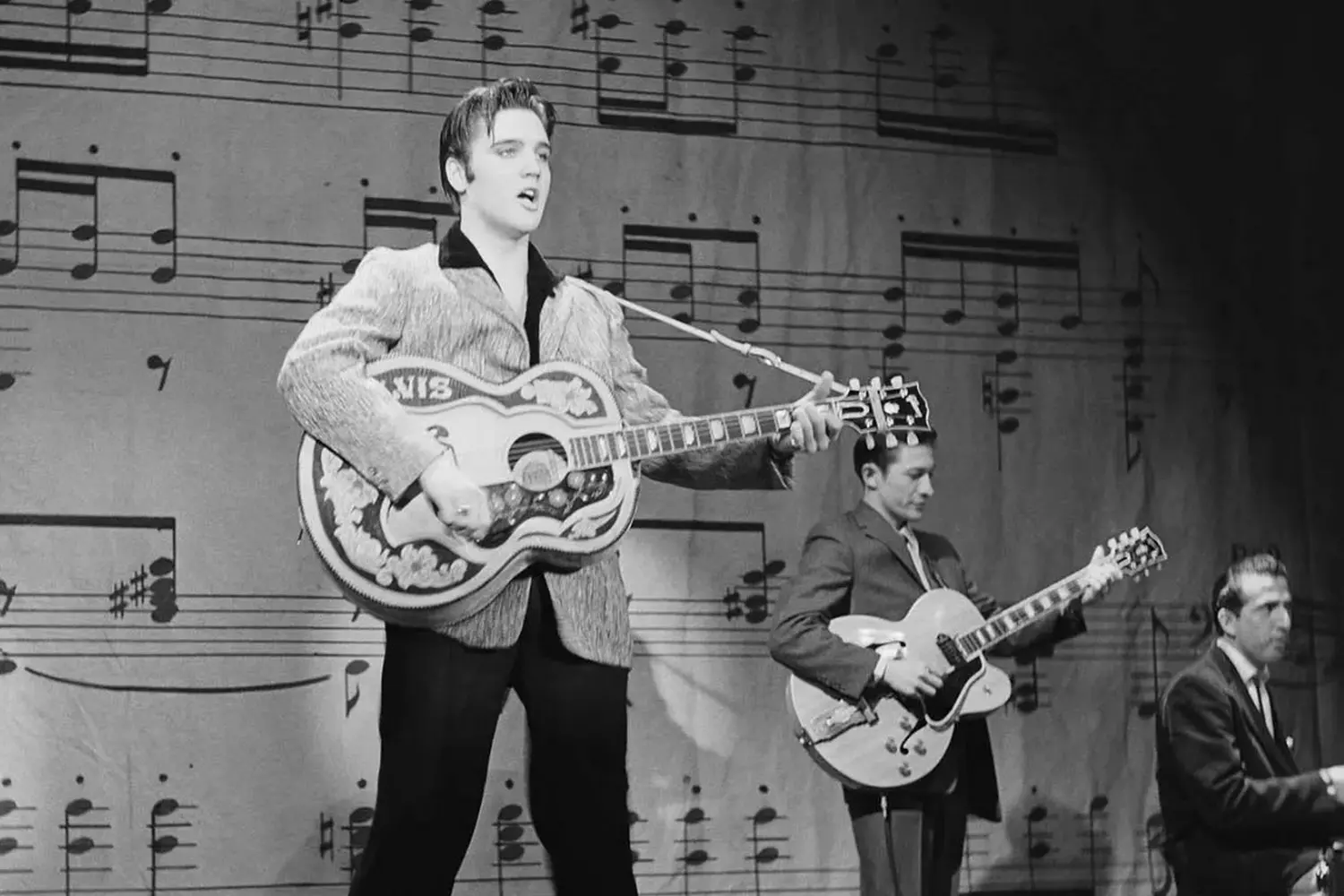
Army and a New Chapter: The King in Uniform
In the spring of 1958, America held its breath. Elvis Presley — the idol of youth, the symbol of the rock-and-roll revolution, a man capable of driving millions of fans into hysteria with a single hip movement — received a draft notice. At that moment, the entertainment industry seemed to freeze in anxious anticipation: what would become of the legend?
Many expected Elvis to find a way out. That a superstar of his caliber would pull strings or feign an illness. But Presley surprised everyone. He didn’t ask for special treatment, didn’t request honorary positions, didn’t look for exceptions. He acted like an ordinary American guy: shaved off his iconic hairstyle, put on a uniform, and headed to the barracks.
— I want to be just like everyone else, he told reporters before departure. — If my country calls, I go.
And it wasn’t for show. He truly served his time not onstage — but on the drill field, in the dust, in formation, during exercises. He was assigned to the 3rd Armored Division and sent to Germany. Two years of service — not a PR tour, but genuine military routine.
- Elvis in the army was no longer just a “singer with the devil’s moves.” He became a true symbol of American youth: a man unafraid of fame or duty. Housewives saw a caring son. Fathers — a responsible man. Veterans — one of their own.
- To the public, this was a kind of catharsis: a star who didn’t flee to Olympus but stayed grounded. Elvis walked the path from stage idol to national hero, redefining his image in culture.
Love in Uniform: Meeting Priscilla
It was in Germany, at the military base in Bad Nauheim, that one of the most iconic stories of his life began. At a gathering with officers’ families, he met the young Priscilla Beaulieu — she was just 14, but immediately struck him with her poise and graceful beauty. There was no screaming fan behavior in her — she was quiet, attentive, and wise beyond her years.
Though their relationship started cautiously, with letters and rare meetings, this girl from a military family would eventually become his wife, the mother of his only child — and a part of his destiny, even in the hardest times.
Return and Triumph
When Elvis returned home in 1960, he was a different man. More mature, composed, inwardly balanced. And — contrary to producers’ fears — even more popular than before.
America had been waiting for him. And he came back not just with a guitar, but with a new mission — he was no longer just a singer, but a national brand. The new Elvis began acting in films, recording romantic ballads, winning over a new audience — not just teens, but entire families.
Military service could’ve been the end. Oblivion. Elvis might have become a relic of the wild ’50s. But he did the impossible: he turned mandatory service into a moment of personal and cultural rebirth. He became more relatable, more human, more real.
And so began a new chapter — the era of the mature Elvis. Not just an icon. A person who had lived through fame, solitude, love, and duty.
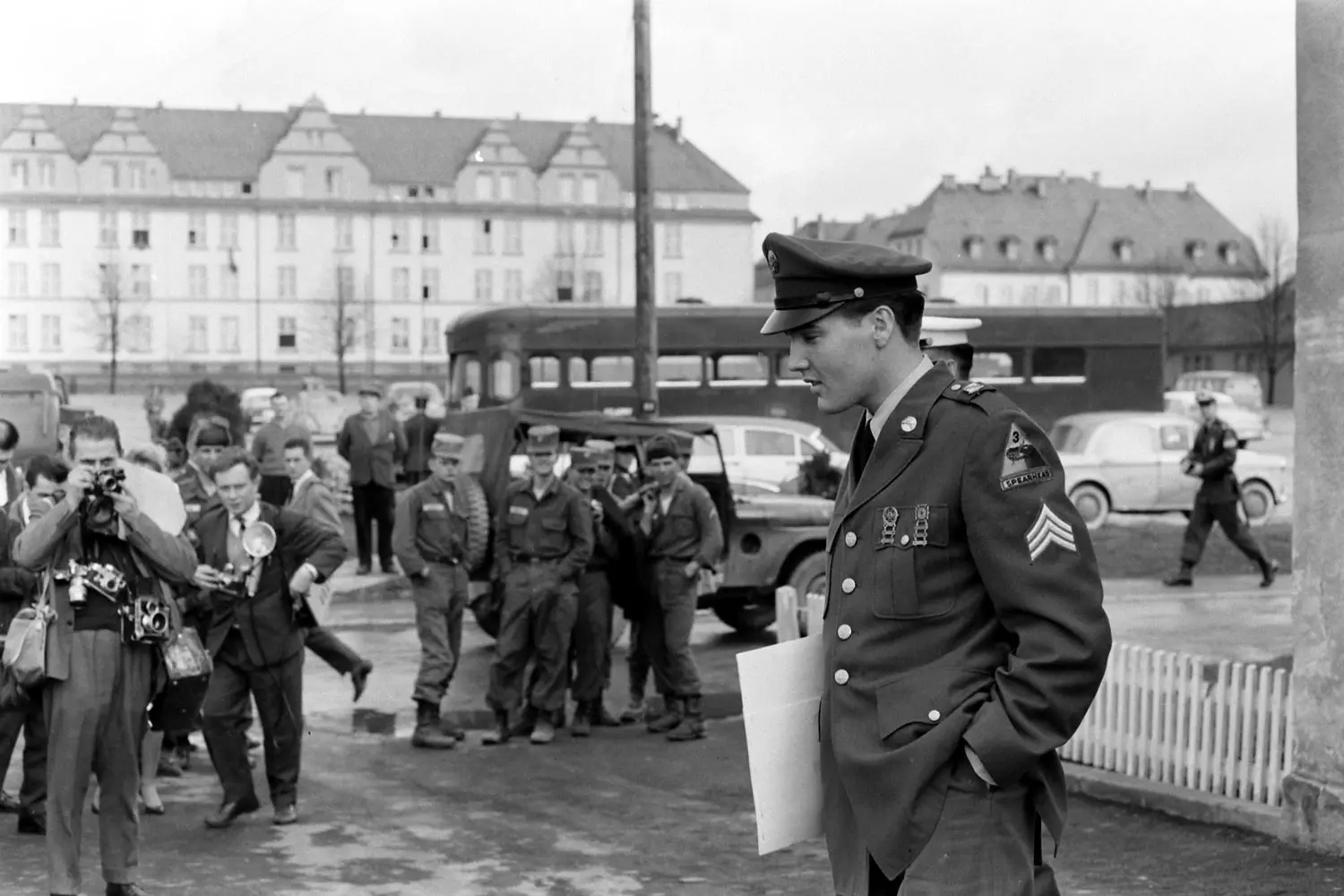
Elvis in Hollywood: Between Fame and Longing for the Stage
Сince the mid-1950s, Elvis Presley exploded onto the music scene, and by the end of the decade, he set out to conquer another arena — cinema. From the late '50s to nearly the mid-'60s, Elvis starred in more than 30 films. But this wasn’t cinematic art in the classical sense — it was more of a commercial product that brought in millions of dollars and secured Elvis's status as a star beyond the stage.
- 01. The films starring Presley were mostly light-hearted musical comedies — bright, cheerful, often with naive plots that mainly served as an excuse to insert a few songs. These were stories of youth, love, adventure, and dancing — a kind of “pop culture harmony.” Though these movies didn’t aim for high awards or critical acclaim, they served their purpose well — delighting fans and generating profit.
- 02. Alongside his on-screen persona, Elvis’s style took shape. He became a fashion and youth culture icon: leather jackets, shiny white suits with wide lapels, signature sunglasses, neatly styled hair — all of it became a symbol of the era and the object of imitation for millions of fans worldwide.
But behind the glamour of movies and fashionable looks was another side — a yearning for real music and the raw energy of the stage. Presley felt an inner conflict: the films essentially turned him into a factory-made product, a sort of “entertainment machine,” where he was little more than a smiling guy with a guitar.
He missed the days when he could stand on stage in front of a live audience, feel their energy, improvise, and experiment with music. Back at Sun Records and during those first concerts — that’s where the spark, freedom, and passion lived. In movies, however, he felt confined — as if trapped in a golden cage, where creativity was subjected to commercial demands.
The period of Hollywood films turned out to be both a triumph and a trial for Elvis. On one hand — widespread fame, millions of dollars, and cult status. On the other — a deep sense that he was losing himself as a musician.
Some directors and producers didn’t allow him to grow, demanding standardized roles and songs. Elvis fought for the chance to take on more serious and profound projects, but almost always faced rejections. His diaries and interviews from that time hint at sadness and a feeling of unfulfillment.
This inner conflict and longing for live music eventually became the fuel that led to Elvis’s powerful comeback to the stage in the late 1960s — when, after a long break, he returned with a concert in Las Vegas, igniting the crowd and proving to everyone that he wasn’t just a movie star but the King of Rock and Roll, burning bright on stage with renewed force.
This period in Hollywood was an important and complex chapter in Elvis’s life — a time when he became both a cultural phenomenon and a captive of the entertainment industry. But he never forgot who he really was — a musician with the soul of a rebel and a voice that changed history.
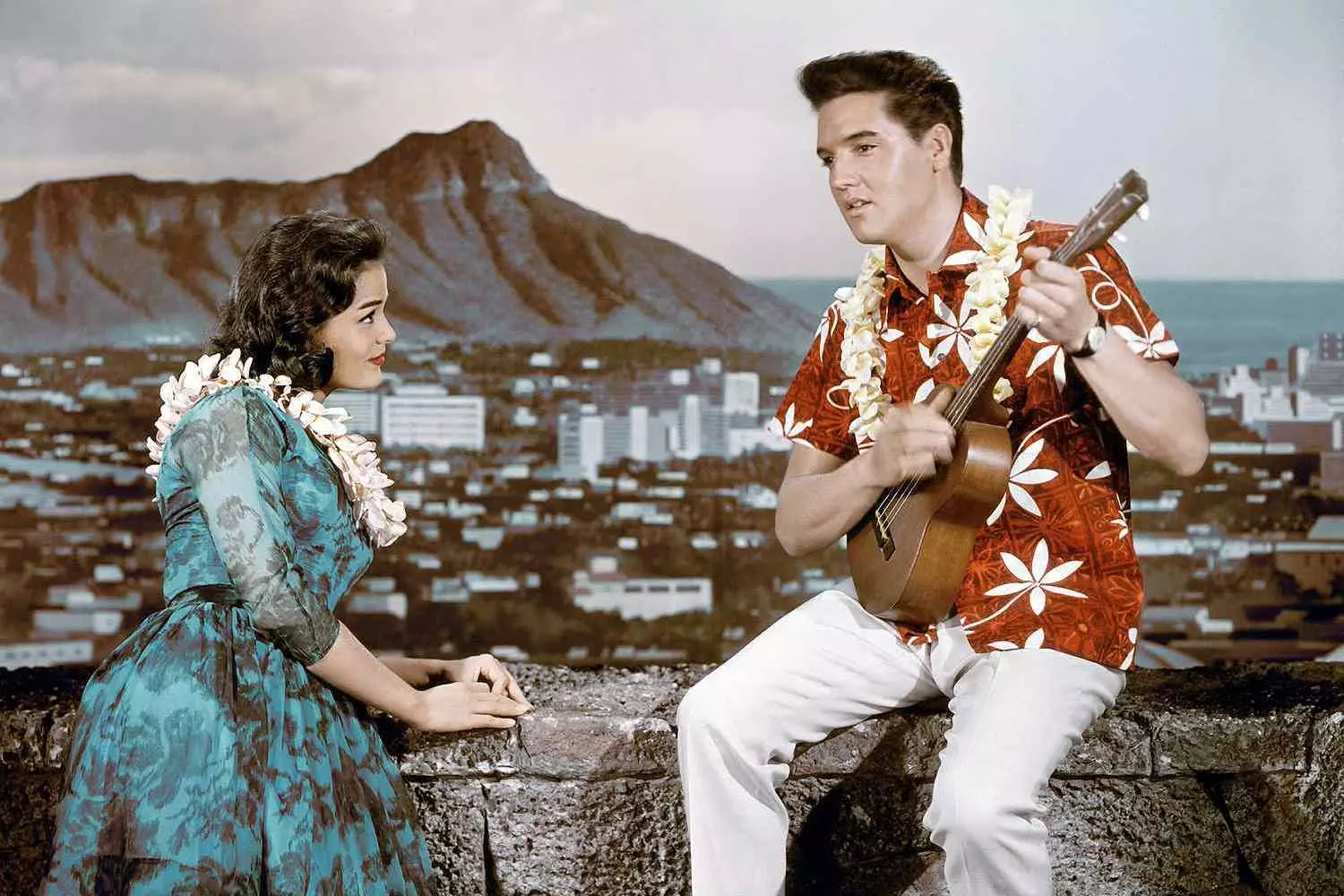
Elvis Presley’s Personal Life: Love, Family, and Inner Struggles
Elvis Presley's personal life was full of contrasts and often remained in the shadow of his dazzling career, but it was in these intimate moments that the true man behind the image of the King of Rock and Roll was revealed.
Elvis was incredibly close to his family. His relationship with his mother, Gladys, remained especially warm and important to him—she always supported him and was his main pillar during difficult times. After her death in 1958, Elvis went through a deep personal crisis that affected both his creativity and his health.
- One of the most significant chapters of his life was meeting Priscilla Beaulieu. In 1962, while serving in the army in Germany, Elvis met 14-year-old Priscilla, and a relationship began that later turned into marriage. In 1967, they married and had a daughter, Lisa Marie. However, their marriage was not without its troubles—issues such as disagreements and infidelity arose. In 1973, they officially divorced but maintained respectful relations for the sake of their daughter.
- Elvis was known for his passion for luxury and comfort: he loved cars, jewelry, and extravagant outfits that became part of his stage persona. Yet behind the glitter of showbiz lay a tendency toward loneliness and inner doubt. Among close friends and family, he was a kind and caring person who valued the simple joys of life.
- His personal life was also surrounded by rumors and media attention. Elvis never hid his admiration for women, but his closest relationships were usually with a few special individuals rather than numerous affairs. Nevertheless, the pressure of fame and constant touring took a toll on his family ties and emotional well-being.
- Despite all the challenges, Elvis always tried to maintain a balance between public life and private space. His relationship with his daughter Lisa Marie was particularly touching—he strived to shield her from the hardships he himself had faced in his youth.
Elvis’s personal life is a story of love and loss, passion and solitude, which makes the image of the great artist even more human and relatable for millions of fans. Behind the bright lights of the stage was a man of deep emotion and a strong desire to be loved and understood.

The King’s Comeback
1968 became the year of Elvis Presley’s great comeback. After years during which his name had become increasingly associated with light musical comedies, he decided to make a bold statement — to return to the stage and prove he was still the King of Rock and Roll.
This comeback happened in the form of a special televised concert, which went down in history as the “Elvis ’68 Comeback Special”. Elvis appeared on screen wearing a black leather jacket — a symbol of renewal and personal struggle. His appearance was simple yet striking, in stark contrast to the flashy costumes and Hollywood gloss of earlier years.
- 01. That evening, Elvis sang with such passion and energy that every note felt like a farewell chord. The camera caught him up close — beads of sweat, tension in his hands, sparks in his eyes. He didn’t just perform the songs — he revived them, breathing new life and emotion into every line.
- 02. The audience and critics were thrilled: never before had Elvis sounded so raw and powerful. The TV special caused a sensation — it became the turning point for a new phase in his career.
- 03. From that moment on, Elvis fully returned to live performances and touring. In the 1970s, his career rapidly accelerated, especially in Las Vegas — a city that became his second stage. There, he performed more than 600 shows in prestigious casinos, drawing packed audiences and rave reviews.
- 04. In Las Vegas, Elvis was no longer just the rebellious youth — he had become a mature star with commanding stage presence. His concerts were dazzling productions with dramatic lighting, luxurious costumes, and masterful vocal performances. Every night was a true celebration for fans eager to witness the legend live.
But behind the glittering success lay another reality — an internal crisis for the artist. Constant touring, pressure to meet expectations, personal struggles, and health issues gradually took their toll. Elvis tried to find balance between fame and privacy, between the need to stay on top and the desire to simply be himself.
This period was one of tough trials — a time when the King of Rock and Roll seemed to have everything, yet also felt loneliness and exhaustion. Nevertheless, it was during these years that he once again proved his genuine passion for music, with the stage becoming his salvation.
Elvis’s 1968 comeback was not just a return — it was a true triumph that reaffirmed his legendary status. Throughout the 1970s, he remained one of the brightest and most influential figures on the global music scene, leaving behind a legacy that continues to inspire millions.
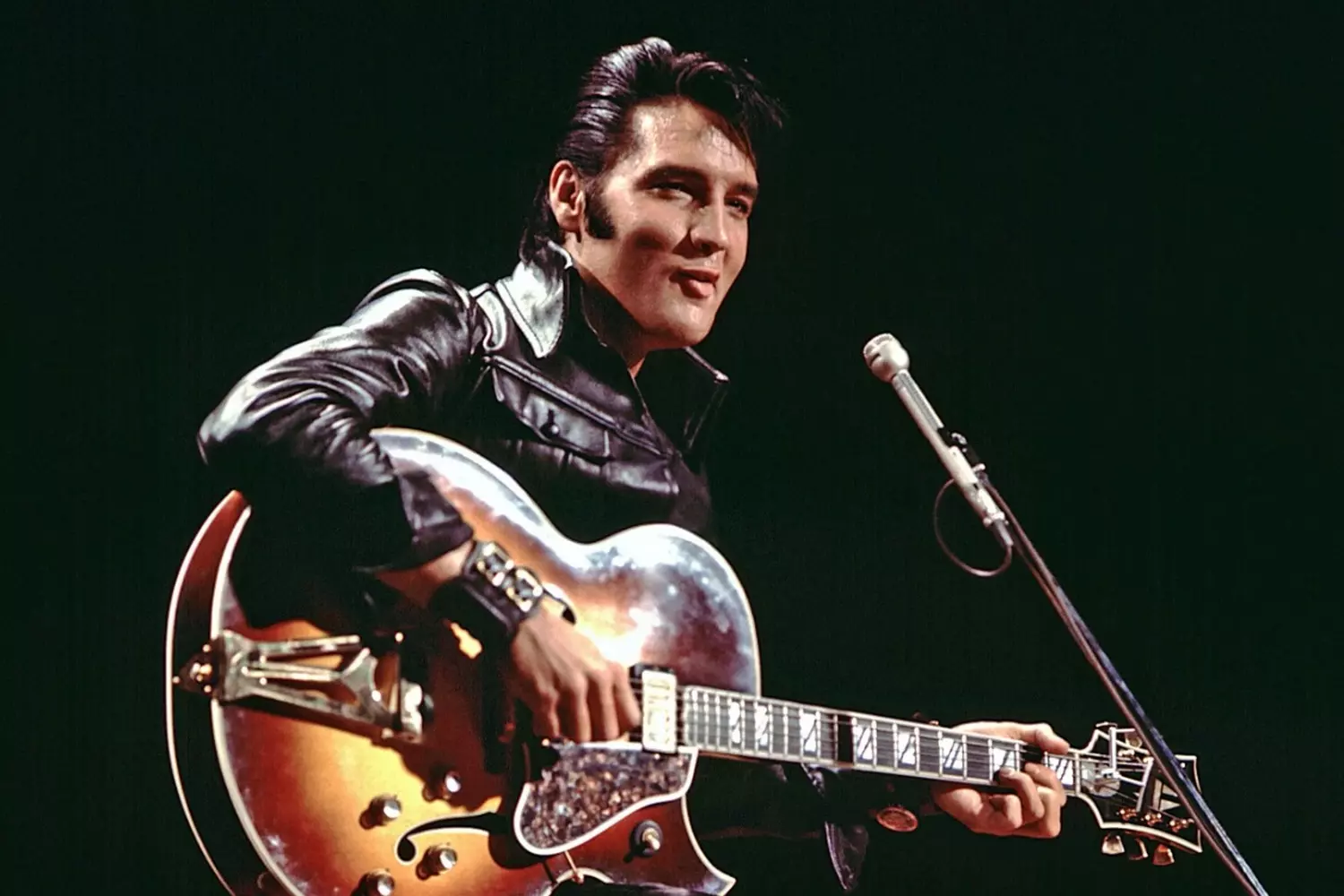
The King of Rock ‘n’ Roll’s Final Years and Tragedy
By the late 1970s, Elvis Presley had entered the most difficult period of his life. Endless touring, the pressure of fame, and the public’s constant expectations were draining him both physically and emotionally. Despite being the “King”, he increasingly battled inner demons — loneliness, depression, and a growing dependence on prescription drugs.
His health was deteriorating rapidly. Constant travel, late-night performances, and the relentless pace left him with little time to rest. Elvis tried to cope with pain and stress through medication, but this only worsened his condition. Those close to him noticed how the once energetic and charismatic performer was changing — his movements became slower, his gaze tired and distant.
On August 16, 1977, the world was struck by tragic news: Elvis Presley had died in his home — the legendary Graceland. He was only 42 years old. The official cause of death was listed as a heart attack, brought on by prolonged prescription drug use and overall physical exhaustion.
The news of his passing shocked millions of fans across the globe. It felt as though an entire era had come to an end. Yet paradoxically, Elvis’s image became even more mythical after his death, and the cult surrounding him only grew larger. He became a symbol of an entire generation — an embodiment of freedom, rebellion, and talent lost too soon.
His legacy lives on to this day — the music, style, and spirit of Elvis Presley continue to inspire millions. His name will forever remain in the hearts of those who value authenticity, passion, and the unmatched charisma of the true King of Rock and Roll.
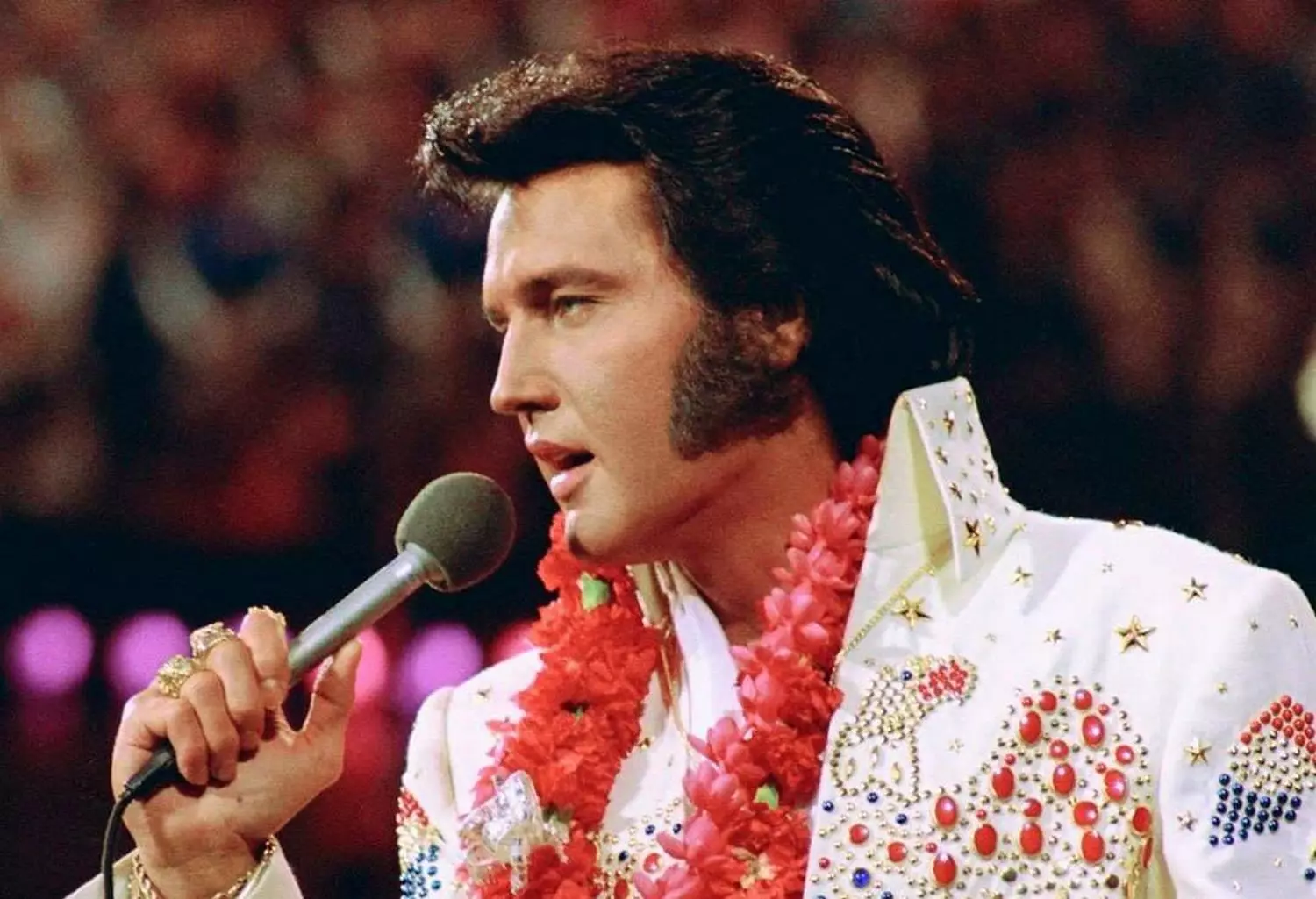
Death of Elvis and the Unsettling Mysteries: Conspiracy Theories and Rumors
The death of Elvis was a shock to millions of fans around the world. It seemed impossible that such a vibrant and lively person could simply disappear so early. And it was from this moment that various rumors and mysterious conspiracy theories began to emerge around the legend.
The official cause of Elvis’s death is cited as a heart attack, exacerbated by drug abuse. However, many fans and researchers still doubt that the story was so simple and straightforward. Soon after the announcement of his death, theories started to surface that the singer had faked his passing to escape the press and the constant pressure of fame.
- One of the most popular myths is the story that Elvis is alive and hiding somewhere in seclusion. Fans claim that in his later years Presley was under immense pressure, and that death was his only way out of public life. Allegedly, there are witnesses who saw Elvis after the official date of his death, and suspicious traces and even photographs inconsistent with reality have been found at his Graceland cemetery.
- Other theories suggest a possible conspiracy involving representatives of the music industry, government agencies, or even close associates of the artist. According to one version, the singer was eliminated because he knew too many secrets or was planning to expose corruption and manipulation in the show business. Some believe Elvis’s death was staged to preserve the legend as eternal and unchanging in the public eye.
- There is also discussion around the idea that the true cause of death was concealed from the public to protect the star’s reputation and avoid damaging the business. Medical reports and autopsy results remain controversial, as some details were classified or subject to alteration.
All these rumors and theories have become an integral part of the Elvis myth — an image that lives far more vividly and longer than the real person. They reflect fans’ desire to keep a bit of magic alive and their belief that the King of Rock and Roll remains with us forever, regardless of time and circumstances.

Elvis Presley: Some Shocking Facts About the King You Didn’t Know
He changed music forever, became the first superstar of pop culture, and left behind hundreds of legends. Elvis Presley was not just an icon but a man with an amazing — and sometimes strange — biography. Did you know he loved fried bananas with bacon, was afraid of police officers, and could hypnotize women with his gaze?
- 01. Elvis’s first concert cost… just $5
In 1954, 19-year-old Elvis took the stage for the first time for a modest $5. Just two years later, he was paid $10,000 per night — an astronomical sum at the time! - 02. He never performed outside the USA
Despite his worldwide fame, Elvis never gave concerts abroad. The only time he left the country was a transit flight to Alaska through Canada during his army service. - 03. The FBI monitored him because of his “lewd” moves
In the 1950s, his dance moves were considered too provocative. The FBI even opened a file on him, and TV stations only showed him from the waist up to hide his “suggestive” hip movements. - 04. He collected police badges… but was afraid of cops
Elvis loved police officers, befriended them, and collected their badges. Yet he was terrified of being arrested — even for minor infractions. - 05. His voice was insured for $1.5 million
In the 1970s, insurance companies valued his voice at an astronomical amount. For comparison: it was 10 times more than the insurance on his life! - 06. He slept only 4 hours a day
Due to his hectic schedule, Elvis often stayed up all night but could nap anywhere during the day — even on the floor of the dressing room. - 07. “Graceland” was bought for $100,000 and is now worth 500 million
In 1957, he purchased the famous estate for a sum that seems tiny today. Now it is the second most visited house museum in the US after the White House. - 08. He could hypnotize women
Contemporaries said his deep gaze literally paralyzed women. Some fainted just hearing his voice. - 09. After his death, 14 different drugs were found in his blood
A tragic addiction to pills led to his demise. On the day of his death, a cocktail of painkillers, stimulants, and tranquilizers was found in his system. - 10. He failed a music exam in school
Yes, the future King of Rock and Roll failed his singing test! His teacher said he “had no vocal talent.” - 11. He was naturally red-haired
Elvis’s real hair color was light blond with a reddish tint. They turned black because of the dye he used for the stage. - 12. He loved “The Flintstones” and watched cartoons before concerts
To relieve stress, Elvis would watch cartoons (especially “The Flintstones”) and laugh until tears. - 13. He had a private plane with a golden toilet
His Lockheed JetStar was called the “Flying Graceland” — inside there were carpets, phones, and even gold-plated seat belts. - 14. He gave Nixon a gun and got an FBI badge
In 1970, Elvis stormed the White House with a gift for the president — a gun. In return, Nixon gave him a federal agent badge (which Elvis desperately wanted). - 15. He collected taxis… just because
Several yellow taxis stood in his garage — he bought them simply because he “liked them.” - 16. He slept in a coffin and believed in reincarnation
Due to his interest in the esoteric, Elvis sometimes meditated in a coffin and believed he had been an Italian tenor in the 19th century in a past life. - 17. He wore a gas mask on stage
Once he appeared before the audience wearing a gas mask to prove he could sing under any conditions. - 18. He was afraid of… small dolls
He had a phobia of dolls — he panicked whenever he saw porcelain dolls, calling them “creepy.” - 19. He gave Lisa Marie a helicopter for her 5th birthday
Yes, a real helicopter (though a toy, but with a motor). - 20. He ate dirt… for his health
Elvis believed that clay and sand cleanse the body and sometimes chewed on them.
Elvis was not just a singer — he was a phenomenon who revolutionized music, fashion, and even the behavior of entire generations. His life was a mixture of triumph and tragedy, but the legend of the King of Rock and Roll lives on to this day.
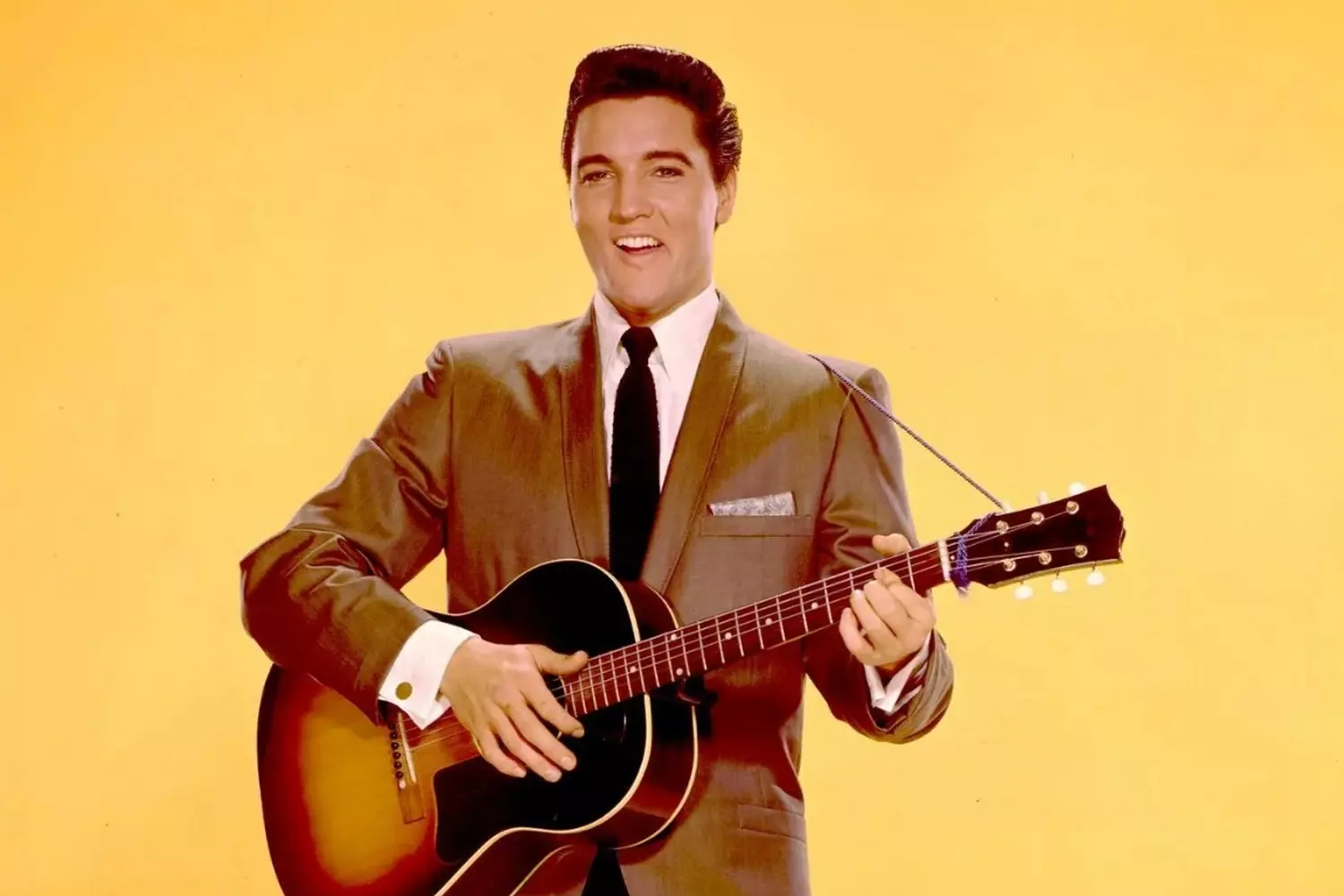
Take a tour tracing Elvis’s footsteps with American Butler
Elvis Presley was more than just a singer. He became a phenomenon that continues to influence music, fashion, film, and culture itself. His voice, style, and energy are timeless.
If you want to feel the America of the '50s, breathe in the air of the stage, and walk in the footsteps of the King, we invite you on a dream journey.
American Butler organizes a personalized tour of Elvis’s legendary places — with comfort, history, and genuine respect for the legend. This is not just a tour. It’s a touch of immortality.



























